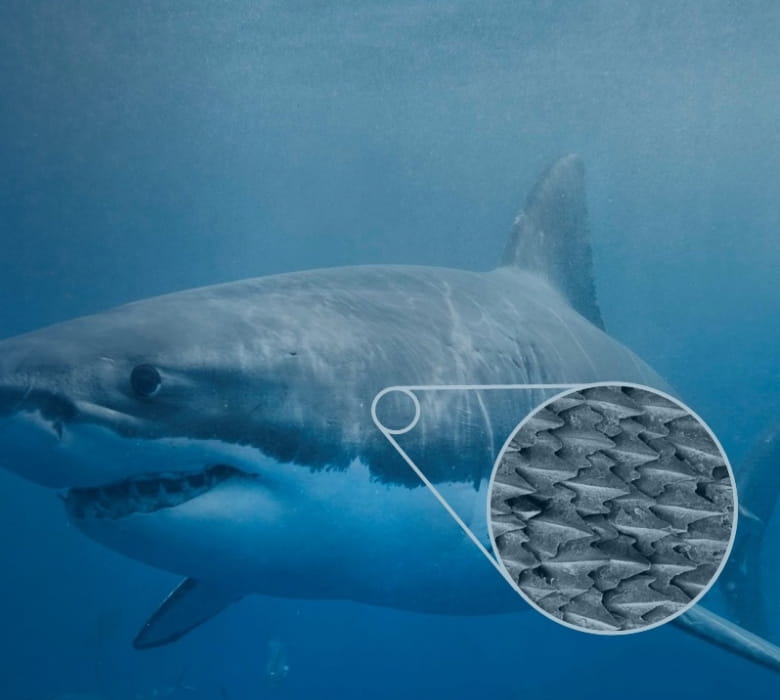

Riblet processing
Energy efficiency solutions
Improving energy efficiency with fine structures
Riblets form a fine artificial structure with a shark-skin-like pattern. It is widely understood that frictional resistance is reduced by using a fine triangular convex structure on a surface that is in contact with air or water. Nikon adds a fine structure called a riblet structure to various products utilizing our proprietary laser processing technology to reduce equipment energy losses and contribute to improving fuel consumption and reducing CO2 emissions.

![[Brochure]Lasermeister LM300A Lasermeister SB100](/img/en/downloads/re/RE_e1v.JPG)
![[Brochure]Lasermeister](/img/en/downloads/re/RE_e2v.JPG)
![[Brochure]High-speed tracking camera](/img/en/downloads/re/RE_L_e.JPG)